Released in 1913
Wagamama
Wagamama
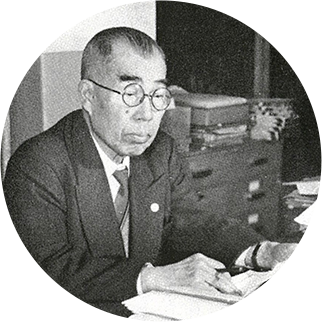
Kikumatsu Ogawa was born in Kawane Village, Ibaraki Prefecture in 1888. He moved to Tokyo in 1902, where he worked at Taiyodo and Shiseido before going independent and founding Seibundo on June 1, 1912 at the age of 26 as a literary agency in the city’s Kandanishiki-cho district. This was the same year that the Titanic sunk, Japan participated in the Summer Olympics for the first time at the Olympic Games held in Stockholm, and Osaka’s landmark Tsutenkaku Tower was completed.
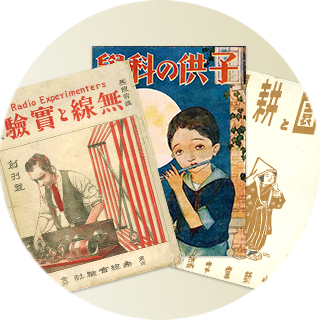
While still operating as a literary agency, in 1913 Seibundo published its first book, Selfish (Wagamama) by Yabuno Mukuju (real name: Genji Shibukawa). This was followed by the release of Sea Romance (Umi no romansu) by Tachio Yonekubo (real name: Mitsusuke Yonekubo), a bestseller said to have inspired people to enroll in merchant vessel training and naval schools.
In 1918, Seibundo released the first volume of The Essentials One Should Learn (Kore dake wa kokoroe-okubeshi) series of lifestyle and etiquette books in response to the spread of democratic ideas in society. This series would go on to include 16 volumes that together sold 1.2 million copies, helping to lay the foundation for Seibundo’s future publications in the lifestyle, hobby and practical guide genres.
Then on September 1, 1923, the Great Kanto Earthquake struck Tokyo and the wider Kanto area. Seibundo’s office building burnt down in the resulting fires, yet it still managed to quickly release Field Survey of the Great Quakes and Fires in Tokyo (Jicchi chosa taishin taika no tokyo), which sold out its print run of 28,000 copies in less than a month. Kikumatsu Ogawa later reflected, “Thanks to the cooperation of the various parties involved, we were able to publish that work with incredible haste. It was the proudest moment of my life.”
Amid the post-quake recovery in 1924, Seibundo released the first issue of Science for Kids (Kodomo no kagaku), a magazine designed to teach children the scientific and technological knowledge required for rebuilding. With public and commercial radio broadcasts set to commence in Japan, that same year Seibundo launched the magazine MJ Wireless Radio and Experiments (Musen to jikken) to communicate developments in wireless radio technology.
Around the same time, Seibundo released its first issue of Practical Horticulture (Jissai engei), which was renamed Agriculture and Horticulture (Noko to engei) after World War II. These three magazines contributed to post-disaster recovery and are still published today.

Released in 1913
Wagamama
Wagamama

Released in 1923
Field Survey of the Great Quakes and Fires in Tokyo
Jicchi Chosa Taishin Taika no Tokyo
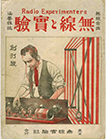
Released in 1924
MJ Wireless Radio and Experiments
Musen to Jikken
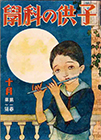
Released in 1924
Science for Kids
Kodomo no Kagaku

Released in 1926
Practical Horticulture
Practical Horticulture (Jissai Engei), later renamed Agriculture and Horticulture (Noko to Engei)
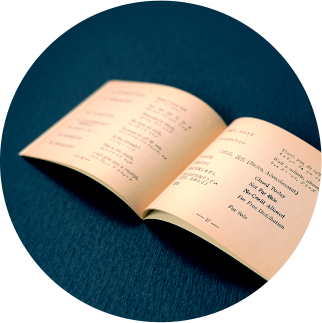
Around the start of the Showa Period (1926–1989), Seibundo began focusing more on advertising. For one year, it was even the industry leader in newspaper ad spending. Seibundo also founded a number of new magazines including Games and Sports, further strengthening its presence in the magazine market.
Seibundo released Desktop Dictionary (Kijo jiten) in 1932, which was a Japanese dictionary with accompanying English entries and handwritten script. These unique features were met with widespread praise and later follow-up editions were released, making Desktop Dictionary a popular seller in the market for years afterward.
In 1935, Seibundo merged with Shinkosha and was renamed its current name, Seibundo Shinkosha Publishing Co., Ltd.
The 1940 book Steel or Flesh (Tetsu ka niku ka) by Minetaro Yamanaka, which depicted the Nomonhan Incident between the Soviet Union and Japan in Manchuria, became a bestseller. In addition to publishing activities, Seibundo hosted a number of events, including a model and diorama exhibition at the Nihombashi Mitsukoshi Main Store of the Mitsukoshi department store chain, which was subsequently held every other year, an Alexander Graham Bell science exhibition at the Toho Theater, a model airplane competition, and an airborne battle competition, held in a military officer club.

Released in 1932
Desktop Dictionary
Kijo Jiten

Released in 1940
Steel or Flesh
Tetsu Ka Niku Ka
World War II ended in August 1945, with Tokyo a charred wasteland following the Allied firebombings. Just a month later in September, Seibundo Shinkosha Publishing released the Anglo-Japanese Conversation Manual (Nichibei kaiwa techo). The book sold 3.6 million copies the first year, making it a historic postwar bestseller.
During the decade after 1945, Seibundo Shinkosha Publishing released Astronomy Yearbook (Tenmon nenkan), Pet Dog Guide (Aiken no tomo) and Idea, part of a series of works that continue to be published today. It also published the Unabridged Tamagawa Encyclopedia (Tamagawa hyakka daijiten) series in cooperation with Tamagawa University, which prompted the 1967 publication of Tamagawa Children’s Encyclopedia (Tamagawa jido hyakka jiten).
Brain (now published by another company) was founded in 1961 and Monthly Astronomy Guide (Gekkan tenmon gaido) was launched in 1965, with the latter (together with Astronomy Yearbook) helping to establish astronomy as a central genre of Seibundo Shinkosha Publishing.
The latter part of the Showa era saw the debut of other popular publications, including Collection of Swift-flying Paper Airplanes (Yoku tobu kamihikoki-shu) by Yasuaki Ninomiya, a longtime bestseller series that sold millions of copies, as well as Collection of Common Test Questions: Complete Memorization Style Amateur MJ Wireless Radio Textbook (Kanzen maru-anki shokyu amachua musen yosomondai-shu), which became the go-to study guide for amateur wireless radio exam hopefuls. Finally, 1984 saw the first issue of Florist, largely completing Seibundo Shinkosha Publishing’s current lineup of magazine offerings.

Released in 1945
Anglo-Japanese Conversation Manual
Nichibei Kaiwa Techo

Released in 1949
Astronomy Yearbook
Tenmon Nenkan

Released in 1952
Pet Dog Guide
Aiken no Tomo

Released in 1952
Idea
Idea

Released in 1965
Monthly Astronomy Guide
Gekkan Tenmon Gaido
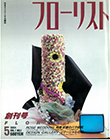
Released in 1984
Florist
Florist
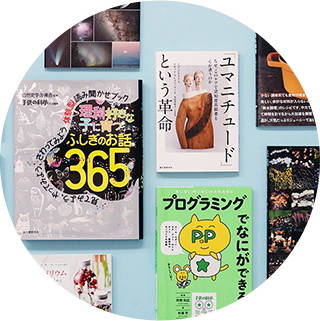
Ongoing social and cultural diversification in Japan spurred Seibundo Shinkosha Publishing to publish works in a wider range of genres. Design Note, debuting in 2004, was a mook (a combination of book and magazine formats) that spawned multiple reprints and shined a light on the work of designers.
In 2012, Seibundo Shinkosha Publishing celebrated its 100th anniversary. Pursuing a more diverse range of publications, it launched the G-Novels imprint of translated entertainment works that kicked off with a Mad Max: Fury Road visual novel. Other works with ties to films, foreign TV shows and video games as well as American comic books were subsequently translated. Seibundo Shinkosha Publishing also launched the online magazine Yomimono.com, which focuses on personal development topics with articles, essays and other works published as standalone pieces.
More recently, Seibundo has released handicraft books such as Pom Pom Animals (Dobutsu ponpon) by trikotri, bestselling cookbooks including Staub Waterless Cooking (Sutoubu de musui chori) by Yuka Ohashi, and other noteworthy works. A read-aloud series, which includes Raising Your Child to Love Cooking: 365 Fascinating Stories (Ryori suki na ko ni sodatsu fushigi no ohanashi 365), has sold a combined total of more than 160,000 copies.
These are some of the new bestsellers in contemporary genres that Seibundo Shinkosha Publishing has produced while sustaining its long-established series and works.
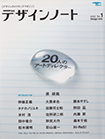
Released in 2004
Design Note
Design Note

Released in 2015
Raising Your Child to Love Science: 365 Fascinating Stories
Rika Suki na Ko ni Sodatsu Fushigi no Ohanashi 365
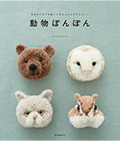
Released in 2016
Pom Pom Animals
Dobutsu Ponpon
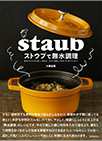
Released in 2017
Staub Waterless Cooking
Sutaubu de Musui Chori

As Seibundo Shinkosha Publishing embarks on the Reiwa era (2019–), it continues to pursue its corporate philosophy of “Contributing to people’s lifestyles, culture, science and technology” by publishing magazines and books in wide-ranging fields, organizing various events and selling related merchandise.
| 1912 | SEIBUNDO founded by Kikumatsu Ogawa, age 26 |
|---|---|
| 1922 | First issues of Commercial Shop Business (Shoten-kai) and Science Illustrated (Kagaku Gaho) released |
| 1923 | Field Survey of the Great Quakes and Fires in Tokyo (Jicchi Chosa Taishin Taika no Tokyo) published |
| 1924 | First issues of MJ Wireless Radio and Experiments (Musen to Jikken) and Science for Kids (Kodomo no Kagaku) released |
| 1925 | First issue of Advertising World (Kokoku-kai) released |
| 1926 | First issue of Practical Horticulture (Jissai Engei), precursor to Agriculture and Horticulture (Noko to Engei), released |
| 1931 | First issue of Games released |
| 1932 | First issue of Sports released |
| 1935 | SHINKOSHA absorbed by SEIBUNDO through a merger and company name changed to SEIBUNDO SHINKOSHA Publishing Co., Ltd. |
| 1938 | First issue of Science for Elementary School Students (Shogakusei no Kagaku) released |
| 1942 | First issue of Flight for Kids (Koku Shonen) published |
| 1945 | Anglo-Japanese Conversation Manual (Nichibei Kaiwa Techo) published, setting a publishing-industry record through sales exceeding 3.6 million copies |
| 1946 | Practical Horticulture (Jissai Engei) name changed, released anew as Agriculture and Horticulture (Noko to Engei) |
| 1947 | First issue of Children’s Handicrafts (Shonen Kosaku) released |
| 1948 | First issue of Introduction to Radio (Shoho no Rajio) released |
| 1949 | First issues of Production Research (Seisan Kenkyu), Curriculum and Astronomy Yearbook (Tenmon Nenkan) released |
| 1950 | First issue of Radio and Television released |
| 1951 | First issue of The Game of Go (Igo) released |
| 1952 | First issues of Pet Dog Guide (Aiken no Tomo) and Guide to the Game of Go (Igo no Tomo) released |
| 1953 | First issues of Idea and Speed Life released |
| 1957 | First issue of World of Hunting (Shuryo-kai) released |
| 1959 | Overview of Japanese Geography, Manners and Customs (Nippon Chiri Fuzoku Taikei) published |
| 1960 | Overview of World History (Sekaishi Taikei) series completed (17 volumes) |
| 1961 | First issues of Brain and Science for Students (Gakusei no Kagaku) released; World of Hunting (Shuryo-kai) goes independent and Shuryokai Co., Ltd. is founded |
| 1962 | First issue of Garden Life released; the Company celebrates the 50th anniversary of its founding |
| 1963 | Unabridged Tamagawa Encyclopedia (Tamagawa Hyakka Daijiten) series completed (31 volumes) |
| 1964 | First issue of Electronic Prospects (Denshi Tenbo) released |
| 1965 | First issue of Monthly Astronomy Guide (Gekkan Tenmon Gaido) released, Overview of World History, Manners and Customs (Sekai Chiri Fuzoku Taikei) series completed (23 volumes) |
| 1966 | First issues of Kinki Region Business (Kinki Eigyo) and Season Display released |
| 1967 | New edition of Unabridged Tamagawa Children’s Encyclopedia (Tamagawa Jido Hyakka Daijiten) series completed (21 volumes), Overview of Japanese Territory (Nippon Kokudo Taikei) released |
| 1970 | Luxury book Encyclopedia of Japanese Bonsai (Nihon Bonsai Taikan) published |
| 1971 | Ultra-luxury book Survey Drawings of Famous Japanese Landscape Gardens (Jissoku-zu Nihon no Meien) published |
| 1972 | Cutout Book: Collection of Swift-flying Paper Airplanes (Kirinuku Hon: Yoku Tobu Kamihikoki-shu) released, Overview of Famous Go Players throughout History (Rekidai Meijin Utsugo Taikei) completed |
| 1974 | Satsuki Bonsai Overview (Satsuki Bonsai Taikan) and Kyoto Landscape Garden Design (Kyoto no Zoen) released |
| 1976 | New Unabridged Gardening Encyclopedia (Saishin Engei Daijiten) series completed (13 volumes) |
| 1977 | Game of Go: The Unabridged Encyclopedia (Igo Daijiten) published |
| 1980 | First issue of monthly magazine Bud (Me) released, Tamagawa Children’s Educational Encyclopedia (Tamagawa Kodomo Kyoiku Hyakka) published |
| 1984 | First issue of Florist released |
| 1985 | First issues of Device File, Portfolio and The Copywriters released |
| 1986 | First issue of Chroma released, New Year’s Cards series released |
| 1988 | First issue of Veggies (Vegeta) released |
| 1990 | First issue of Theater Living released |
| 1991 | First issue of Herb released |
| 1992 | The Company celebrates the 80th anniversary of its founding |
| 1993 | First issue of Cat Club (Neko Kurabu) released |
| 1995 | First issue of Ink Painting School (Suiboku-ga Juku) released |
| 1996 | First issue of Pottery Workshop (Tokobo) released |
| 1998 | First issue of Woodcraft Workshop (Mokkobo) released |
| 2000 | First issues of Audio Craft Magazine and DOGFAN released |
| 2002 | The Company celebrates the 90th anniversary of its founding |
| 2004 | First issue of Design Note released |
| 2006 | MJ Wireless Radio and Experiments (MJ Musen to Jikken) reaches its 1,000th issue |
| 2009 | Pet Dog Guide (Aiken no Tomo) reaches its 700th issue |
| 2012 | The Company celebrates the 100th anniversary of its founding |